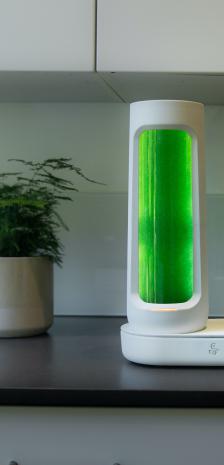
Breaking News
 The Decline Of Boys Participating In Youth Sports Has Led To A Generation Of Soft...
The Decline Of Boys Participating In Youth Sports Has Led To A Generation Of Soft...
 First Arrests Hint At How Billions In California Homeless Dollars Vanished...
First Arrests Hint At How Billions In California Homeless Dollars Vanished...
 Trump Refiles $15 Billion Defamation Lawsuit Against New York Times After Court Dismissal
Trump Refiles $15 Billion Defamation Lawsuit Against New York Times After Court Dismissal
 Can Diet-Changes Really Transform ADHD? One Family's Remarkable Discovery
Can Diet-Changes Really Transform ADHD? One Family's Remarkable Discovery
Top Tech News
 3D Printed Aluminum Alloy Sets Strength Record on Path to Lighter Aircraft Systems
3D Printed Aluminum Alloy Sets Strength Record on Path to Lighter Aircraft Systems
 Big Brother just got an upgrade.
Big Brother just got an upgrade.
SEMI-NEWS/SEMI-SATIRE: October 12, 2025 Edition
 Stem Cell Breakthrough for People with Parkinson's
Stem Cell Breakthrough for People with Parkinson's
 Linux Will Work For You. Time to Dump Windows 10. And Don't Bother with Windows 11
Linux Will Work For You. Time to Dump Windows 10. And Don't Bother with Windows 11
 XAI Using $18 Billion to Get 300,000 More Nvidia B200 Chips
XAI Using $18 Billion to Get 300,000 More Nvidia B200 Chips
 Immortal Monkeys? Not Quite, But Scientists Just Reversed Aging With 'Super' Stem Cells
Immortal Monkeys? Not Quite, But Scientists Just Reversed Aging With 'Super' Stem Cells
 ICE To Buy Tool That Tracks Locations Of Hundreds Of Millions Of Phones Every Day
ICE To Buy Tool That Tracks Locations Of Hundreds Of Millions Of Phones Every Day
 Yixiang 16kWh Battery For $1,920!? New Design!
Yixiang 16kWh Battery For $1,920!? New Design!
 Find a COMPATIBLE Linux Computer for $200+: Roadmap to Linux. Part 1
Find a COMPATIBLE Linux Computer for $200+: Roadmap to Linux. Part 1
Bloom system lets users grow their own spirulina "superfood"

And while it's typically consumed in powdered form, the Bloom system lets you grow the stuff in your own kitchen.
Bloom is manufactured by British startup Canopi, which claims that fresh, live spirulina is much more nutritious than its dried and powdered counterpart. The company adds that fresh algae doesn't have the "swampy" taste of powdered spirulina, plus consumers won't have to worry about the possibility that it was grown elsewhere in contaminated ponds.
The system incorporates two dishwasher-safe, BPA-free polypropylene "pods," which are docked onto a powered countertop base. It also comes with a starter pack of 14 nutrient tablets, along with a live spirulina culture to initially get things going – that culture is sent from the US for North American customers, and from the UK for European customers.
Users start by placing the culture, some water and one of the tablets in one or both of the pods, depending on how many servings of the algae they want to grow at once. The tablet provides the nutrients that the spirulina needs to grow, plus it keeps the water at the optimum pH. The base, meanwhile, maintains the proper light levels and temperature throughout the growth cycle.
After five days, the spirulina should reportedly be ready for harvesting. If the user forgets, a sensor in the system will detect that the algae density in the water has reached a sufficient level, and send a notification via an accompanying app.
An integrated air pump is then used to push the contents of the pod though a fine filter, separating a goopy spirulina concentrate from the rest of the water. That concentrate makes up a single 5-gram serving, which can be mixed into a glass of drinking water, blended into a smoothie, or added to foods. That said, a bit of the spirulina has to be set aside, to "seed" the next batch.



